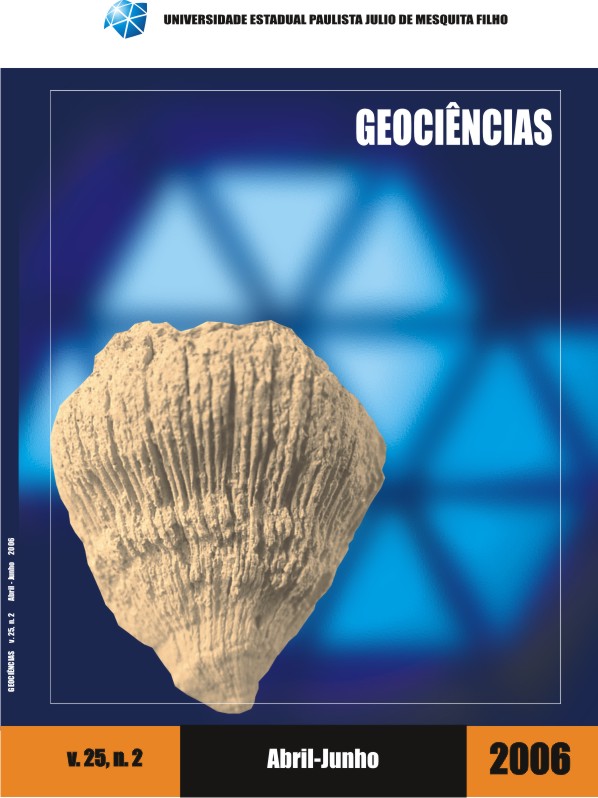NEW GYMNOSPERM RELATED WITH GNETALES FROM THE CRATO PALAEOFLORA (LOWER CRETACEOUS, SANTANA FORMATION, ARARIPE BASIN, NORTHEASTERN BRAZIL): PRELIMINARY STUDY
Palabras clave:
Gnetales, gymnosperm, Early Cretaceous, Crato Member, Araripe Basin.Resumen
A new gnetalean taxon from the Crato palaeoflora is proposed. It occurs in the Crato Member, most basal unit of the Santana Formation, dated as Late Aptian/Early Albian and which consists of horizontal thin laminated limestones. Its deposition was in a continental lacustrine system with several shallow lakes and that evolved under semiarid climate. Gnetales has attracted attention because of its potential for understanding the seed plants phylogeny. Previously, diverse gnetalean macro and microfossils were reported to the Araripe Basin record and recent studies have provided important new data about the occurrence of the Gnetales. The specimens carry cylindrical, articulate and striate stems. Two opposite branches with opposite oblong parallel-veined leaves emerge from the stem basal portion. The roots constitute a dense system and exhibit a central furrow. A pair of strobili emerges oppositely from the nodes. The general organization indicates a woody plant while the small size suggests that it was a short shrub. This plant shares with gnetaleans characters, such as leaves and branches oppositely inserted, distinct nodes, parallel-veined leaves and also strobilar reproductive structure. This plant would live near of the shallow lacustrine environment, maybe in the stream margins, palaeoenvironment already suggested to the Crato Member.Descargas
Publicado
2007-01-29
Número
Sección
Artigos

